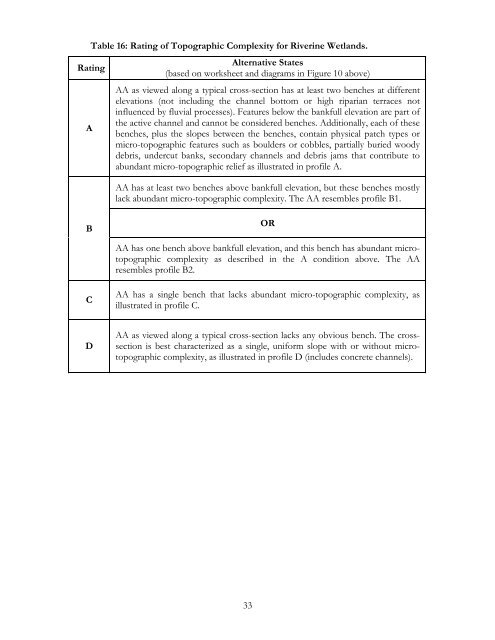Create successful ePaper yourself
Turn your PDF publications into a flip-book with our unique Google optimized e-Paper software.
Table 16: Rating of Topographic Complexity for Riverine Wetlands.<br />
Rating<br />
A<br />
Alternative States<br />
(based on worksheet and diagrams in Figure 10 above)<br />
AA as viewed along a typical cross-section has at least two benches at different<br />
elevations (not including the channel bottom or high riparian terraces not<br />
influenced by fluvial processes). Features below the bankfull elevation are part of<br />
the active channel and cannot be considered benches. Additionally, each of these<br />
benches, plus the slopes between the benches, contain physical patch types or<br />
micro-topographic features such as boulders or cobbles, partially buried woody<br />
debris, undercut banks, secondary channels and debris jams that contribute to<br />
abundant micro-topographic relief as illustrated in profile A.<br />
AA has at least two benches above bankfull elevation, but these benches mostly<br />
lack abundant micro-topographic complexity. The AA resembles profile B1.<br />
B<br />
OR<br />
AA has one bench above bankfull elevation, and this bench has abundant microtopographic<br />
complexity as described in the A condition above. The AA<br />
resembles profile B2.<br />
C<br />
AA has a single bench that lacks abundant micro-topographic complexity, as<br />
illustrated in profile C.<br />
D<br />
AA as viewed along a typical cross-section lacks any obvious bench. The crosssection<br />
is best characterized as a single, uniform slope with or without microtopographic<br />
complexity, as illustrated in profile D (includes concrete channels).<br />
33















